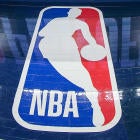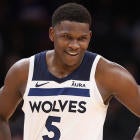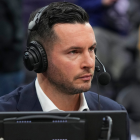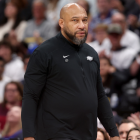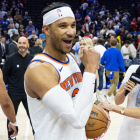
NBA players have shown little enthusiasm for the league's plan to start the 2020-21 season on Dec. 22, only around two months after the Finals in Orlando ended. Michele Roberts, executive director of the NBPA, told The Athletic's Shams Charania that player response to the plan has been "overwhelmingly negative," and Lakers guard Danny Green even hinted that some players might even skip the early portion of the season in an effort to remain fresh for the playoffs. As negotiations progress, however, Charania is reporting that the NBPA is increasingly viewing the Dec. 22 start date as "inevitable."
The Board of Governors will meet on Thursday to discuss the latest proposal, according to Wojnarowski, while the NBPA's team reps plan to meet late Thursday for a possible vote. At present, there are two proposals on the board, but the Dec. 22 scenario is the likelier one:
- The Dec. 22 start would have teams back for training camp on Dec. 1. The schedule would last 72 games and include only 14 back-to-backs. The playoffs would begin May 22, and the Finals would finish around July 22.
- The Jan. 18 start would bring teams back for camp on Dec. 28. The schedule would last 60 games, 24 of which would be back-to-backs. The playoffs would start on June 28 and end between Aug. 21-23.
Both proposals include the following provisions:
- Three or four preseason games
- A six-day All-Star break
- A 25 percent reduction in travel
- A play-in tournament featuring the No. 7-10 seeds
The goal for the NBA is to get the league back on a somewhat normal schedule in time for the 2021-22 season, when it is likelier that fans will be able to attend games. The other benefit to an earlier start would be avoiding any conflict with the 2021 Olympics. Not only would players like to be able to participate, but there is concern over competition for television ratings.
The schedule is not the only thing being discussed, however. The league's finances are also being settled. As of now, it is expected that the salary cap ($109.14 million) and luxury tax (132.63 million) will remain flat, though players are holding out hope for a slight increase. There is also the matter of escrow withholdings to help offset some of ownership's losses. The league had been pushing for a 25 percent withholding, while the players offered 15 percent. Now, according to Wojnarowski, they are expected to land in the range of 18 percent over the next two seasons. The two sides agreed to a 25 percent withholding last season, and according to Charania, much of that money will be returned to the players.
Originally, ownership pushed for unlimited escrow withholdings, per Charania. That would allow the players and league to maintain the approximate 50-50 split in revenue that the CBA dictates. Players, predictably, were not interested, and now, ownership is taking the greater immediate financial hit here. That is a concession they appear willing to make if it means getting the season started on time.
A lot can change between now and Thursday, and even beyond. As has been repeated ad nauseum in recent months: The CBA was not built to survive a pandemic. Both sides are flying by the seat of their pants right now, and an ultimate agreement will require compromises from all parties involved.













